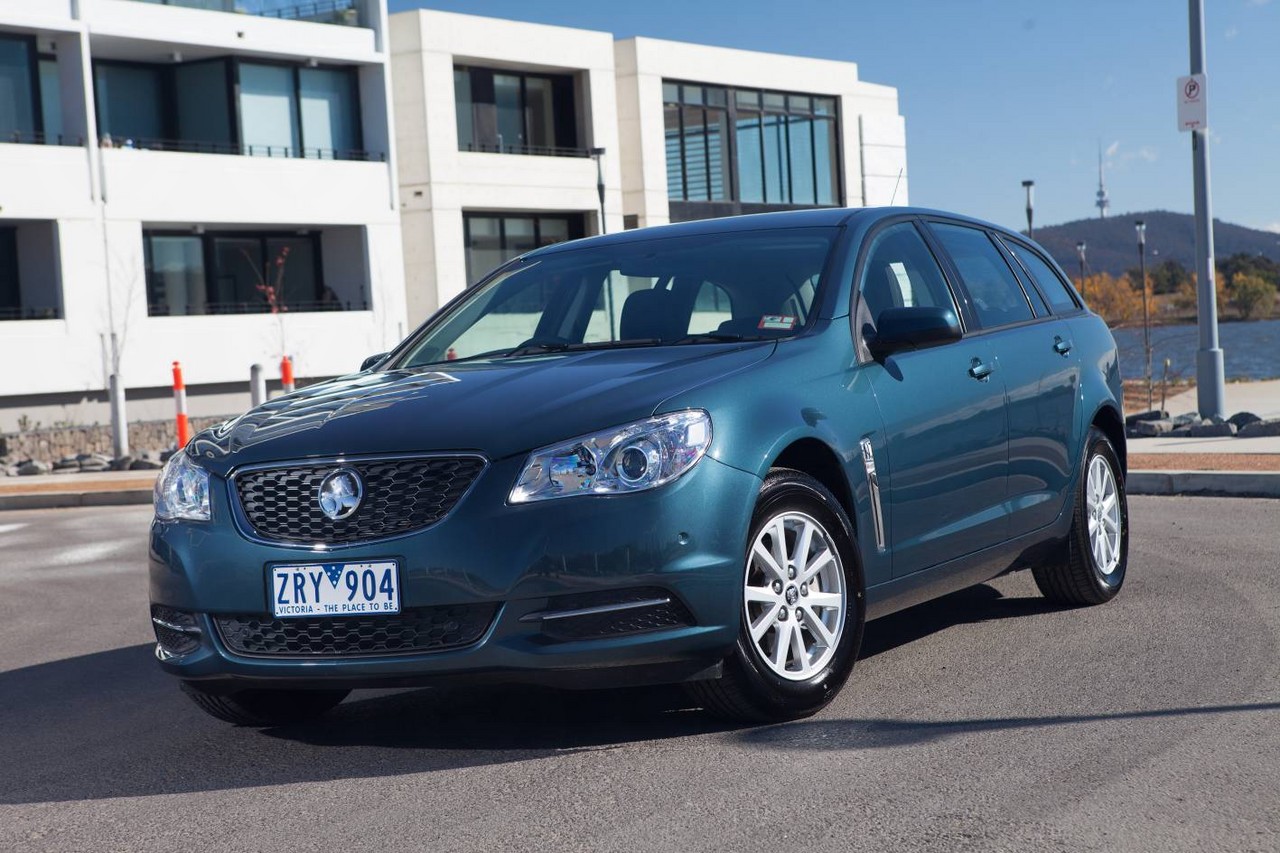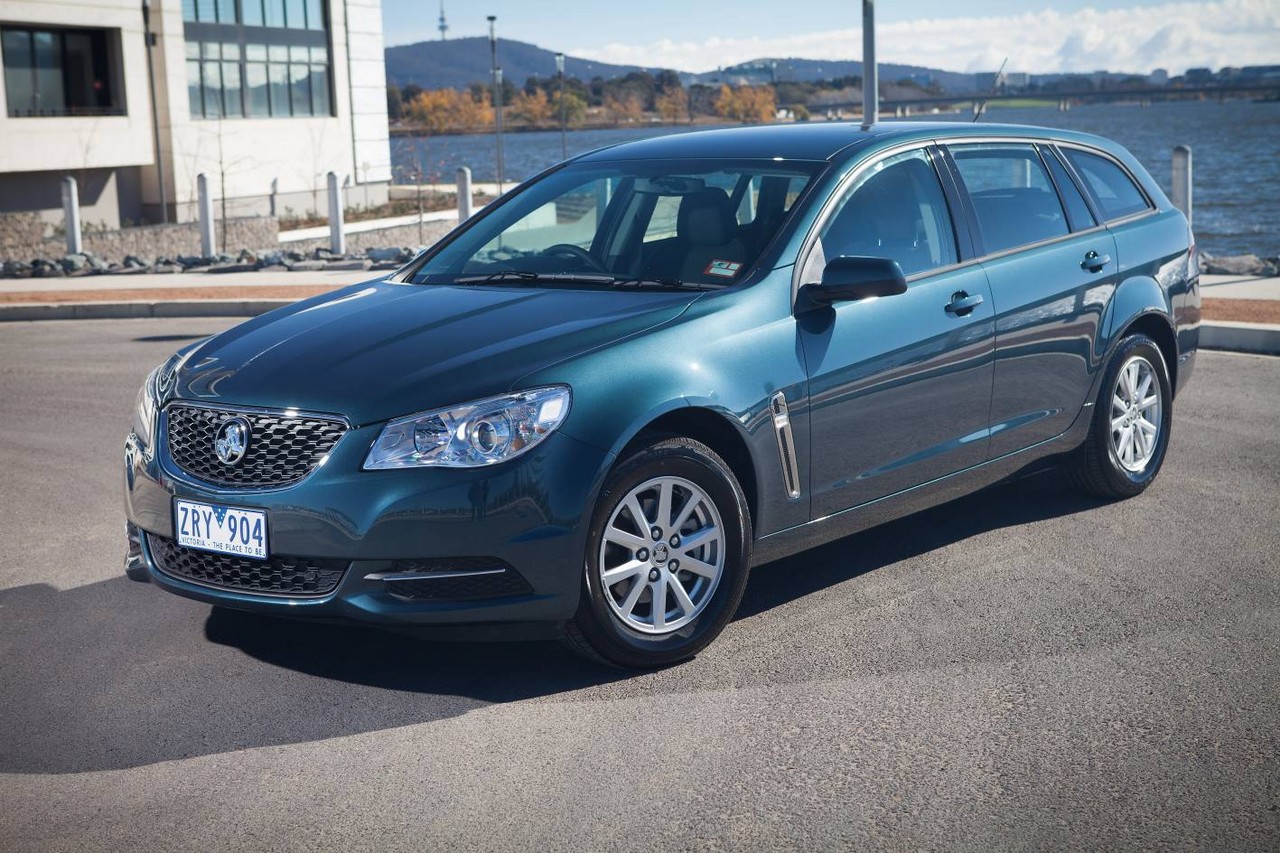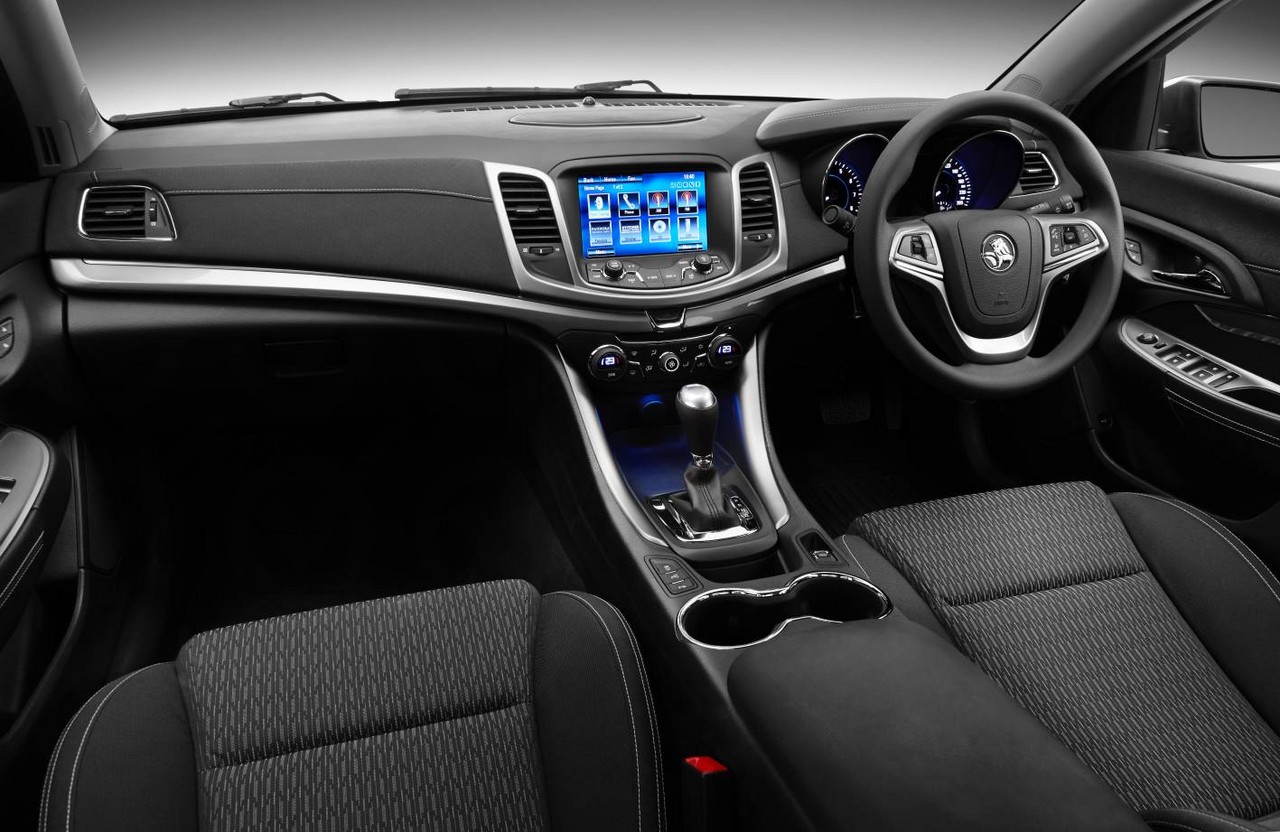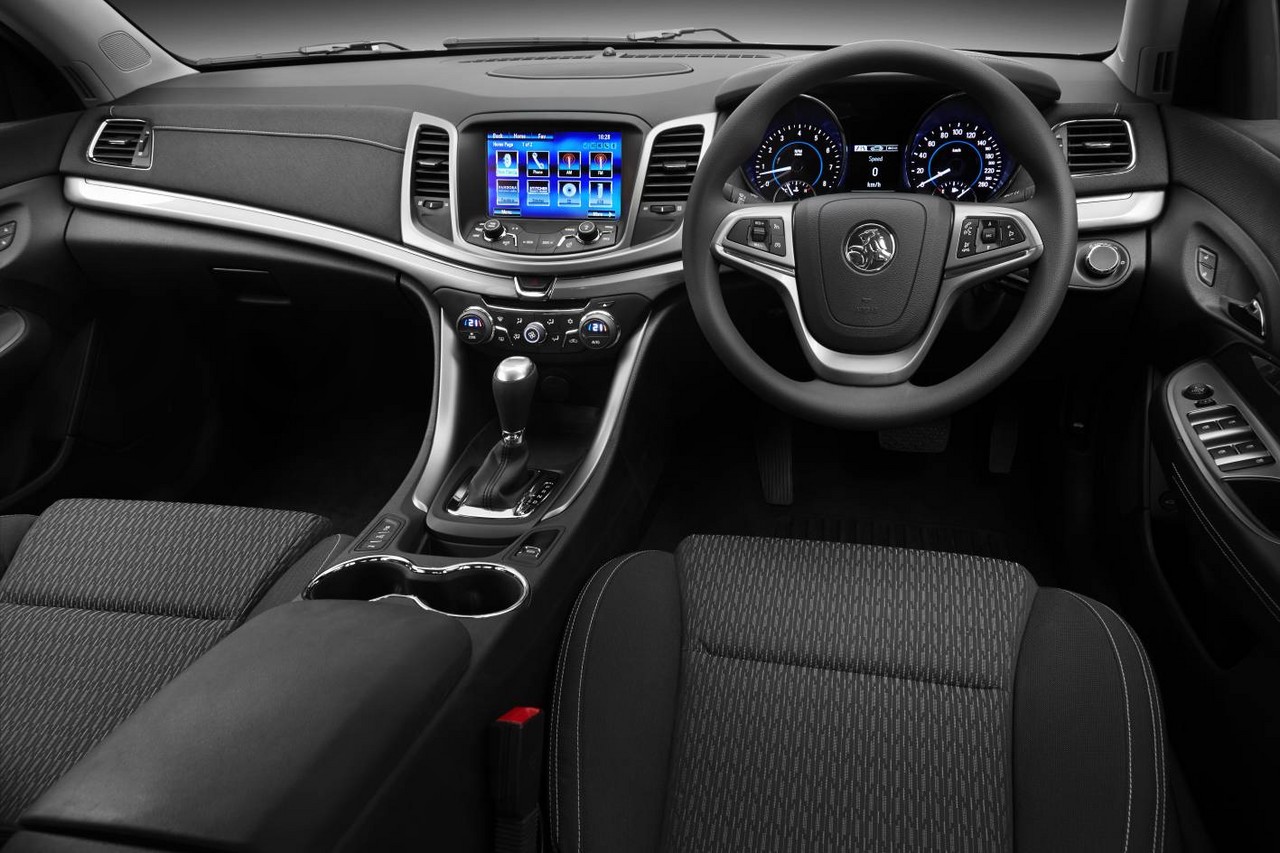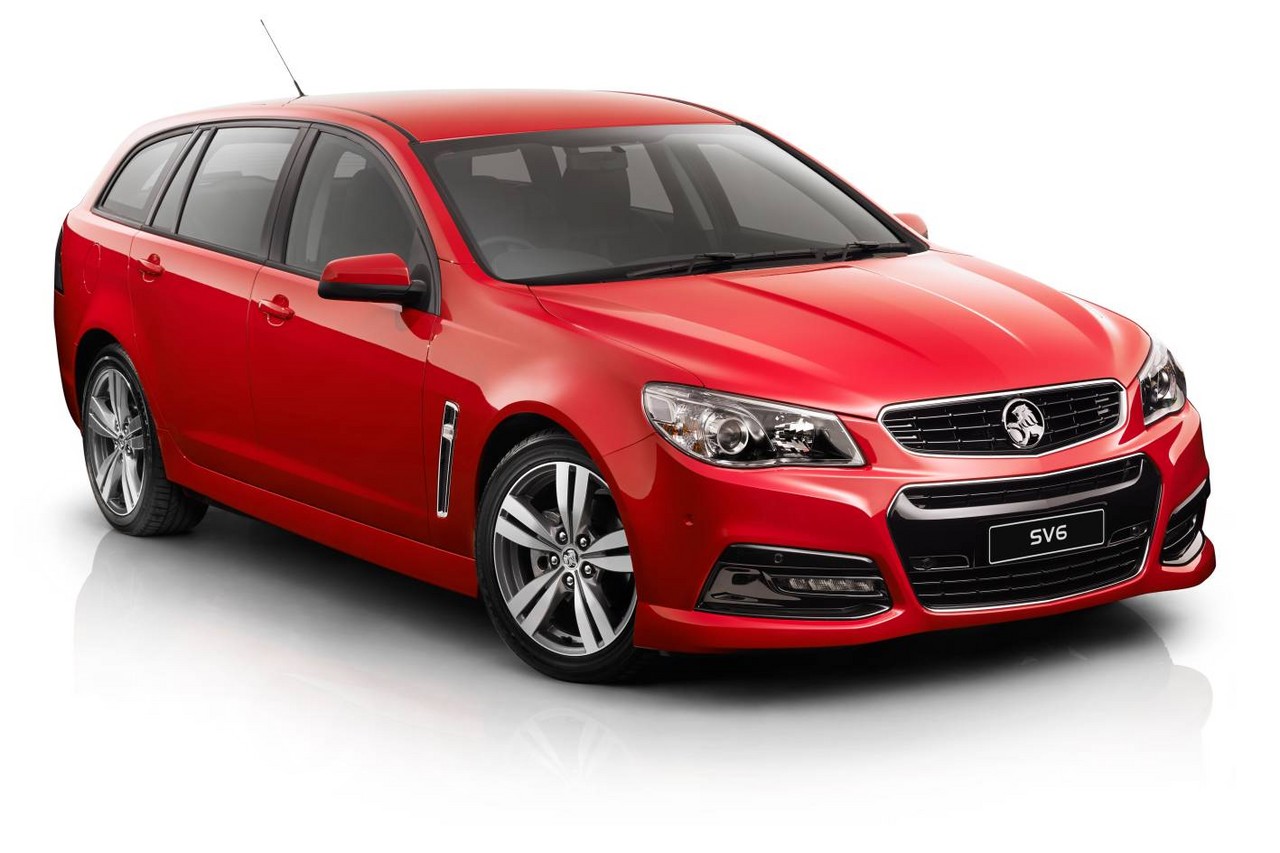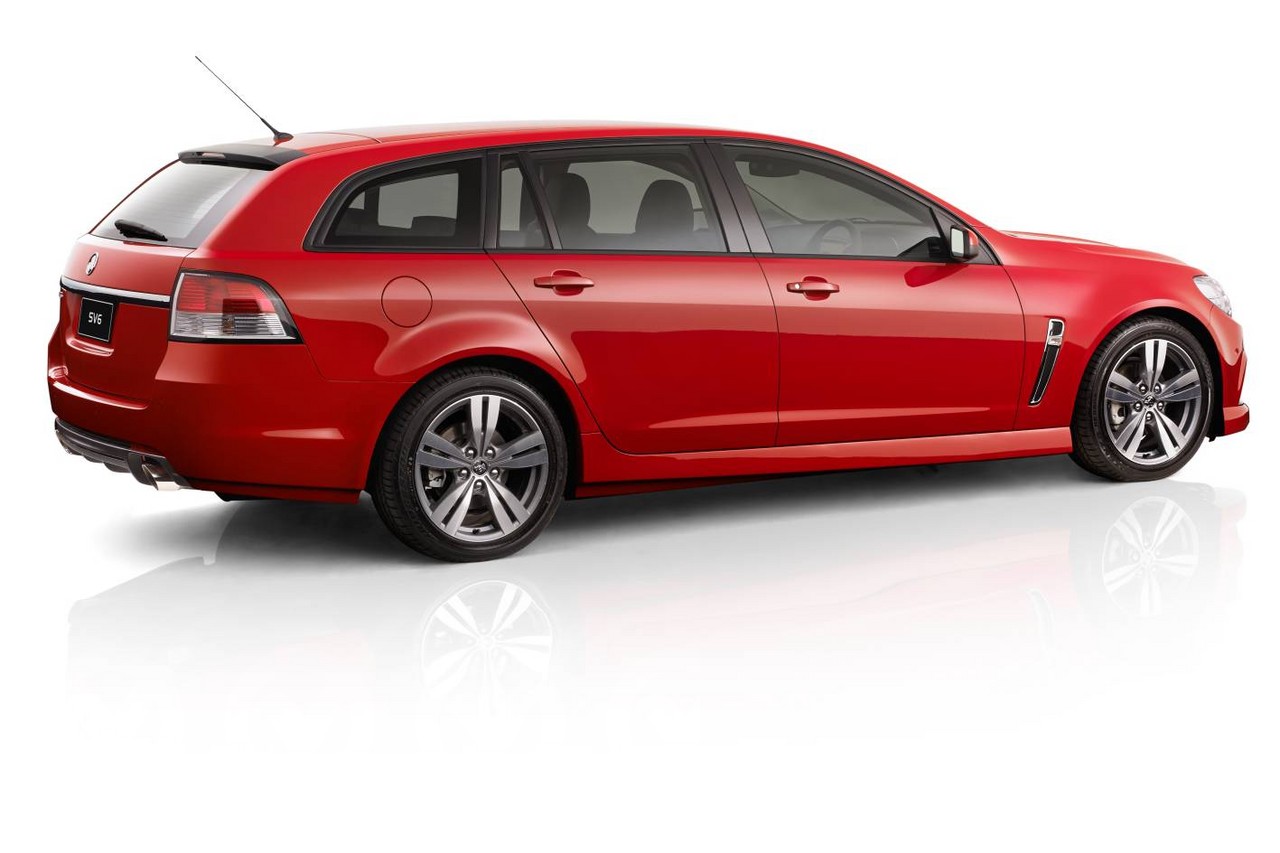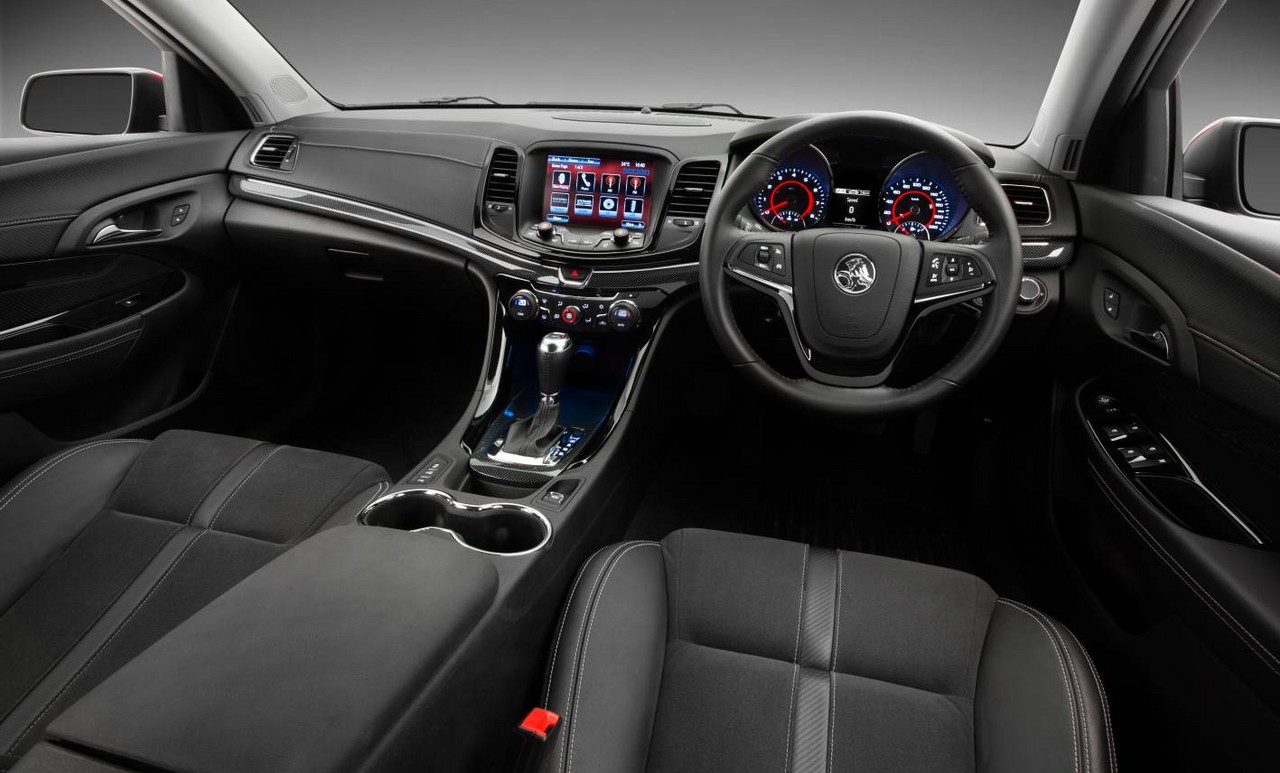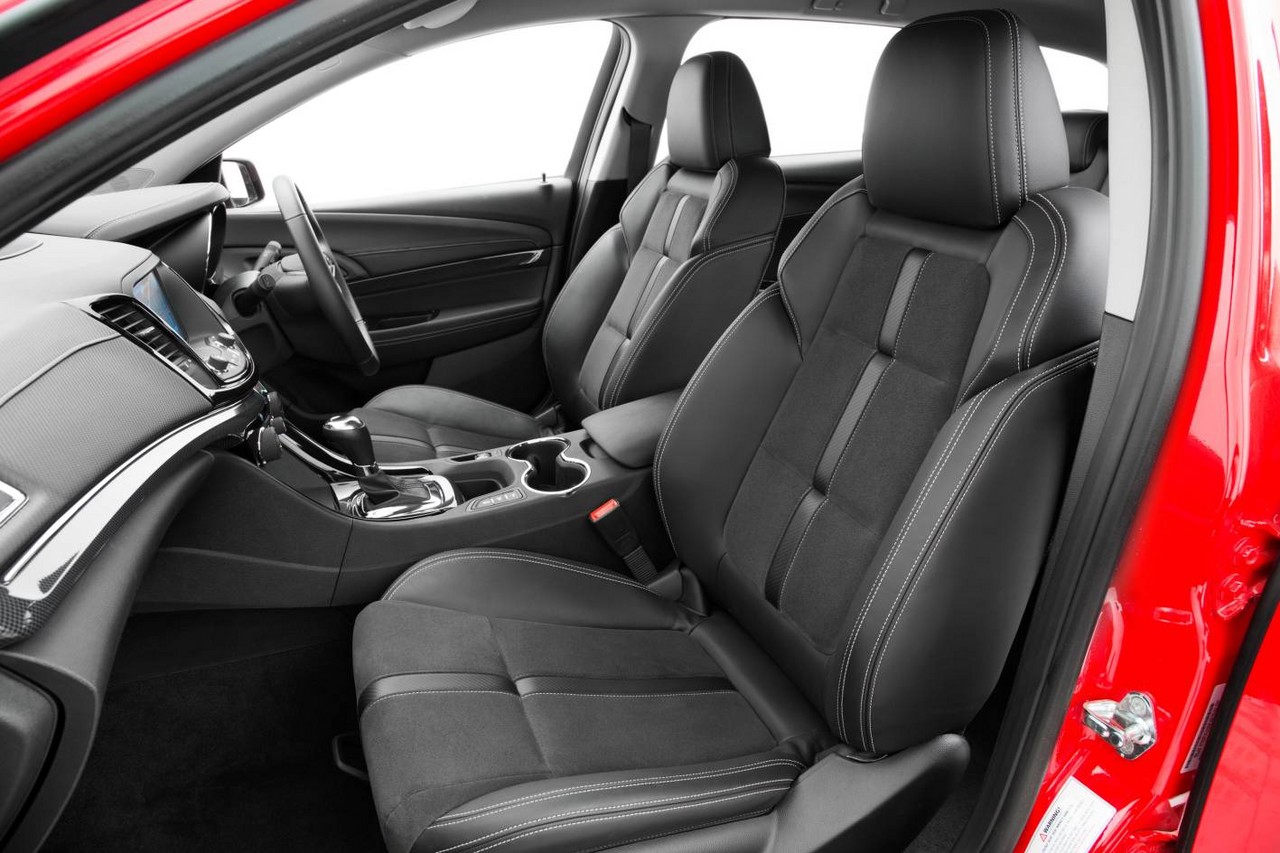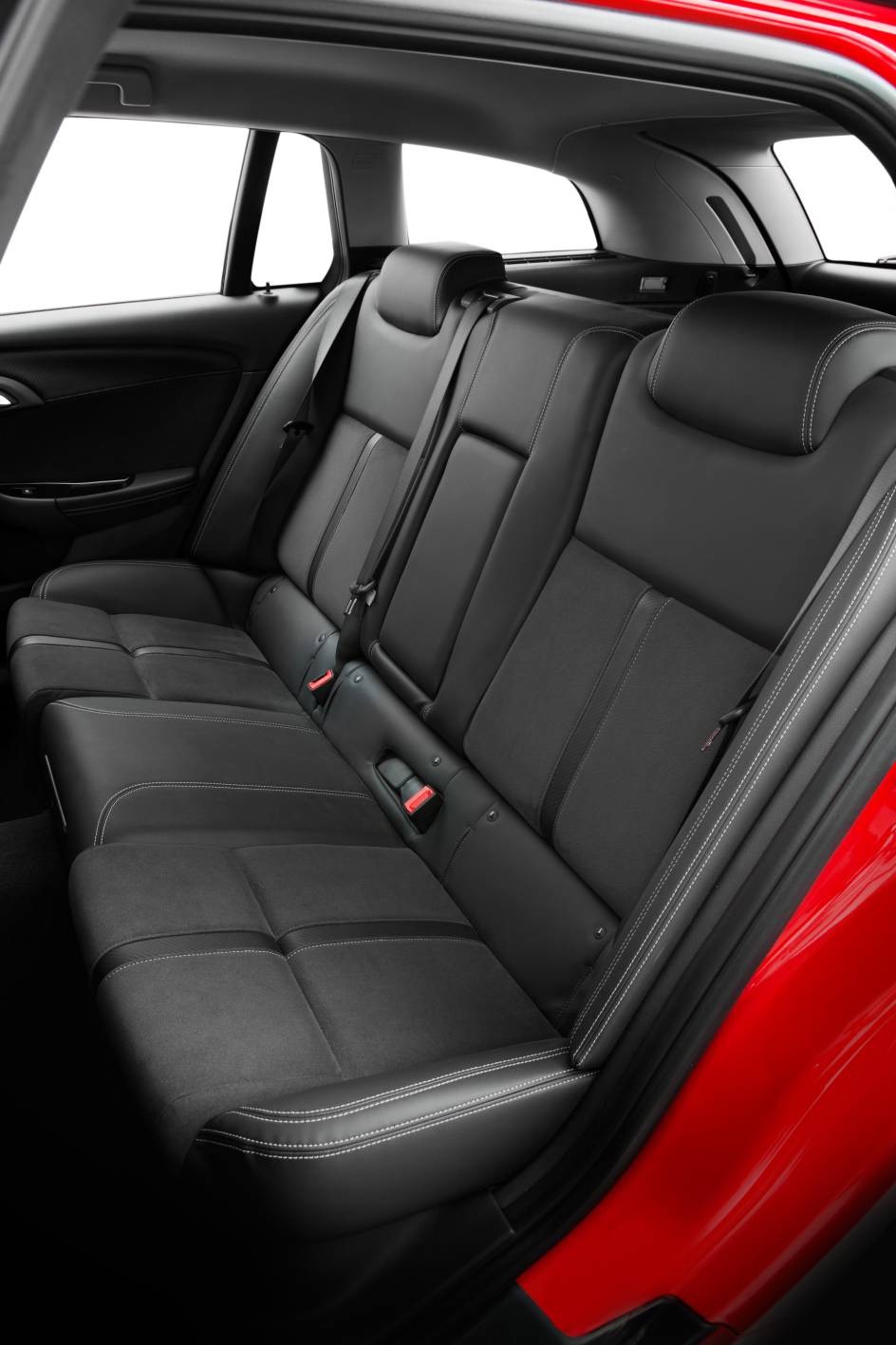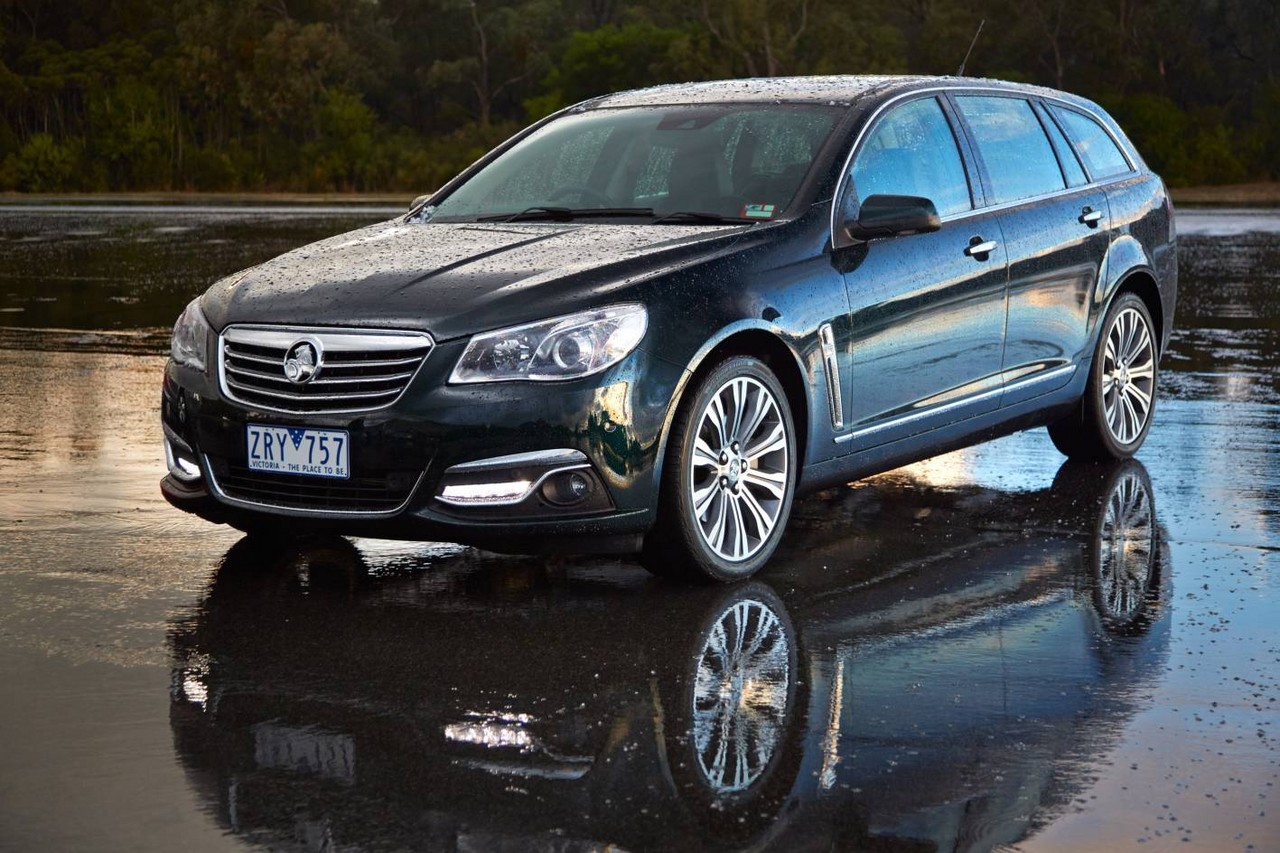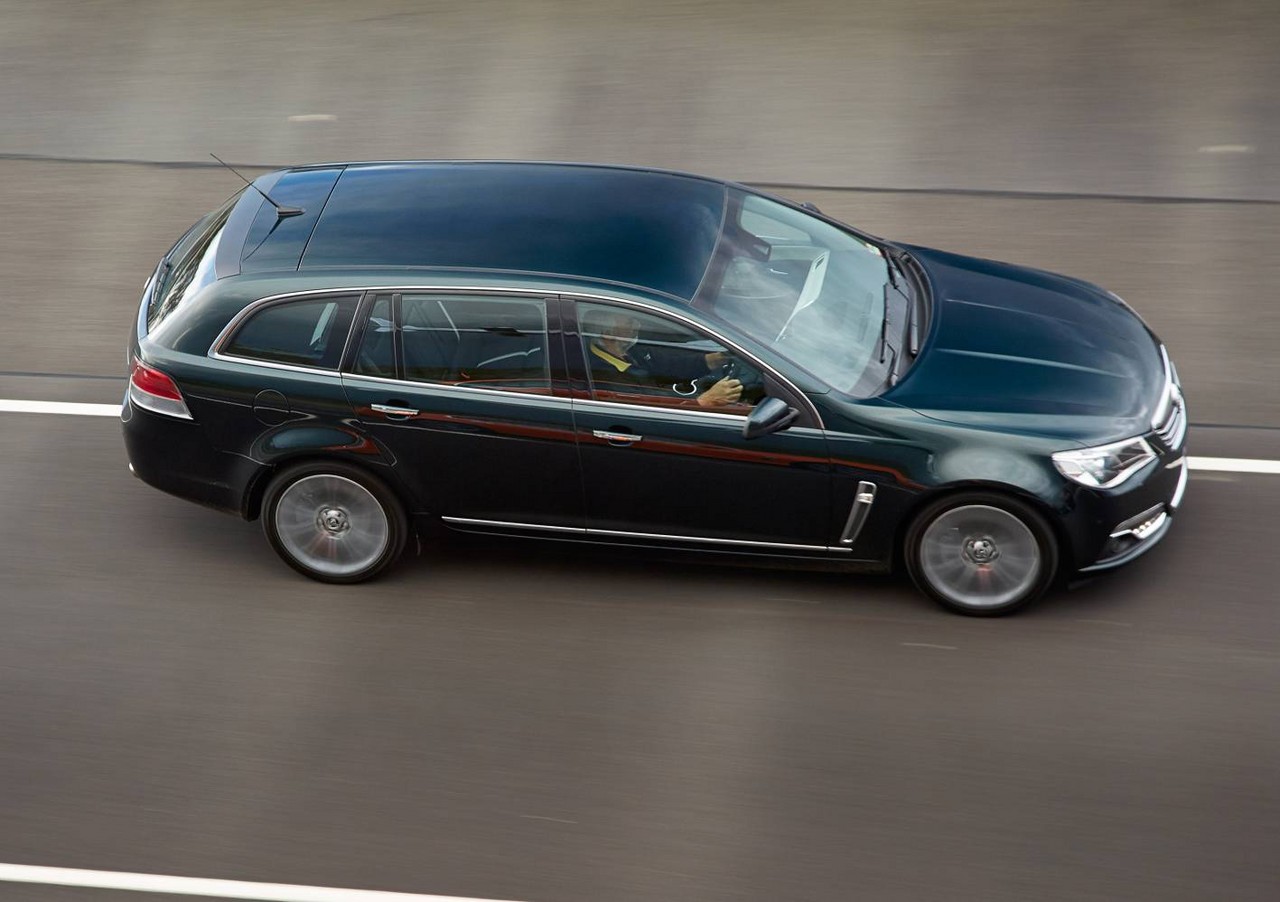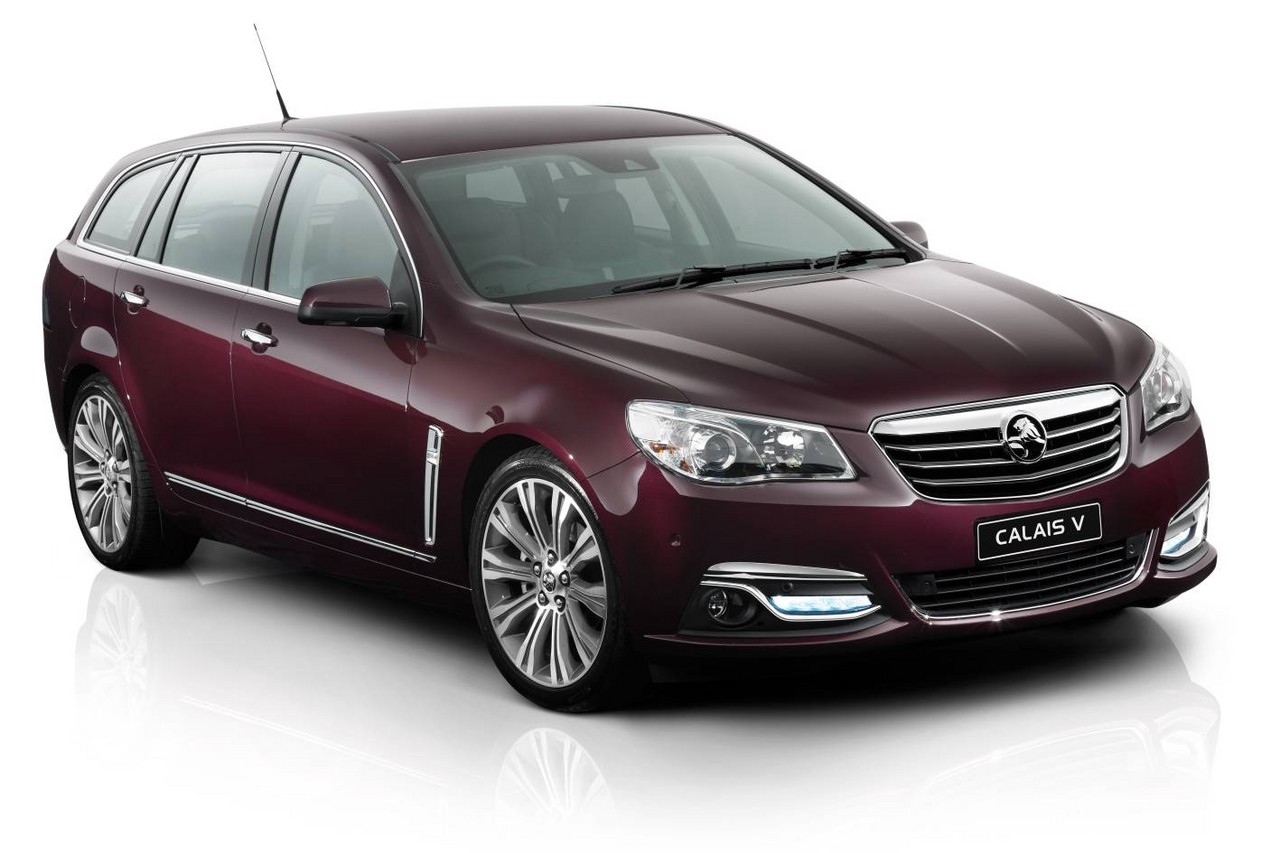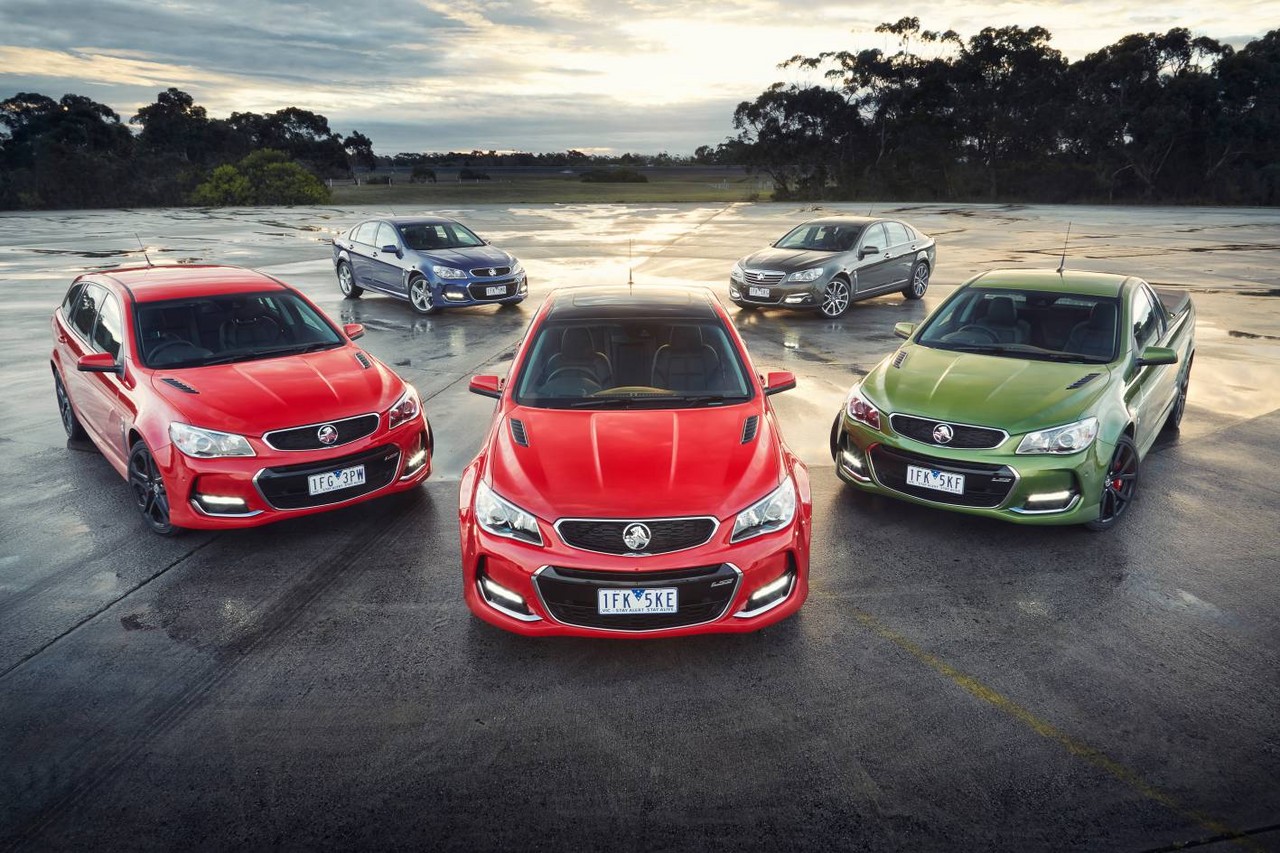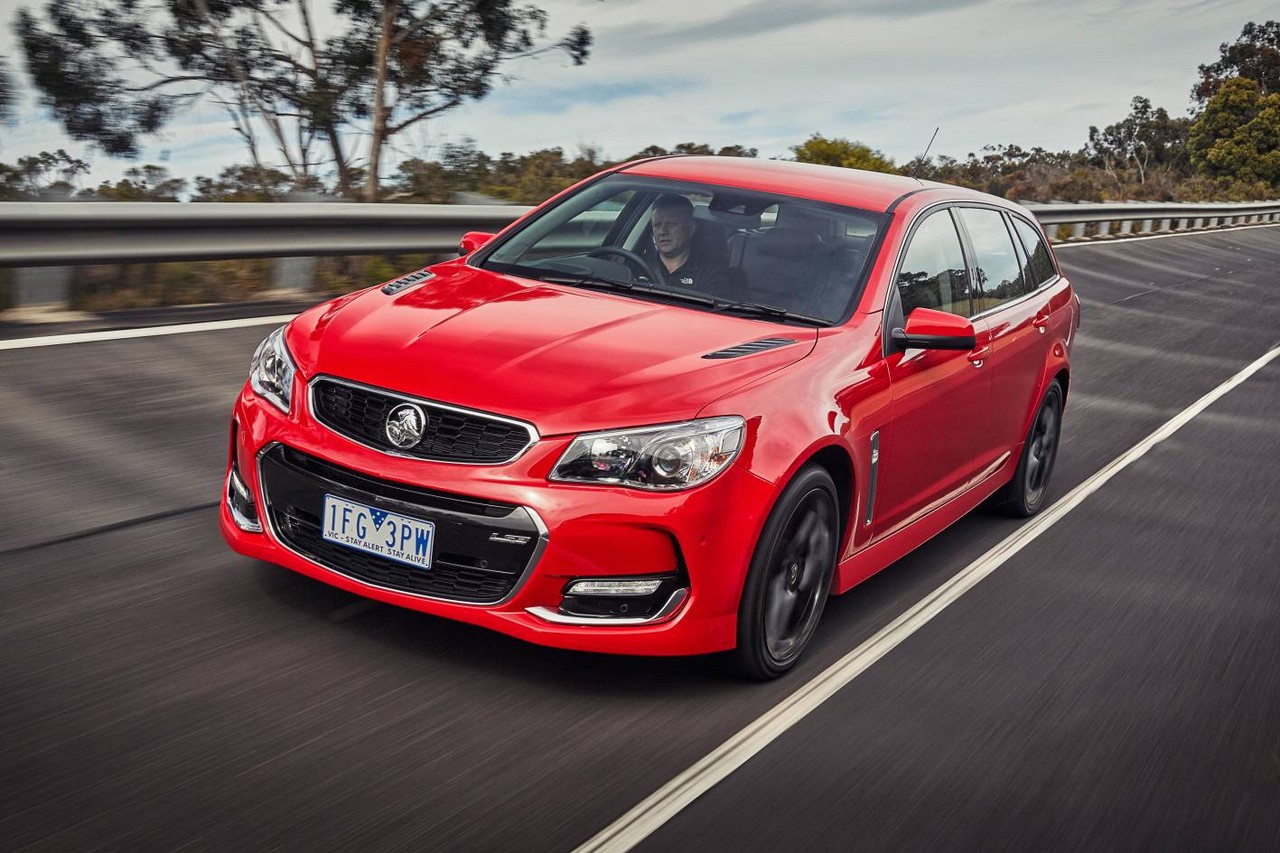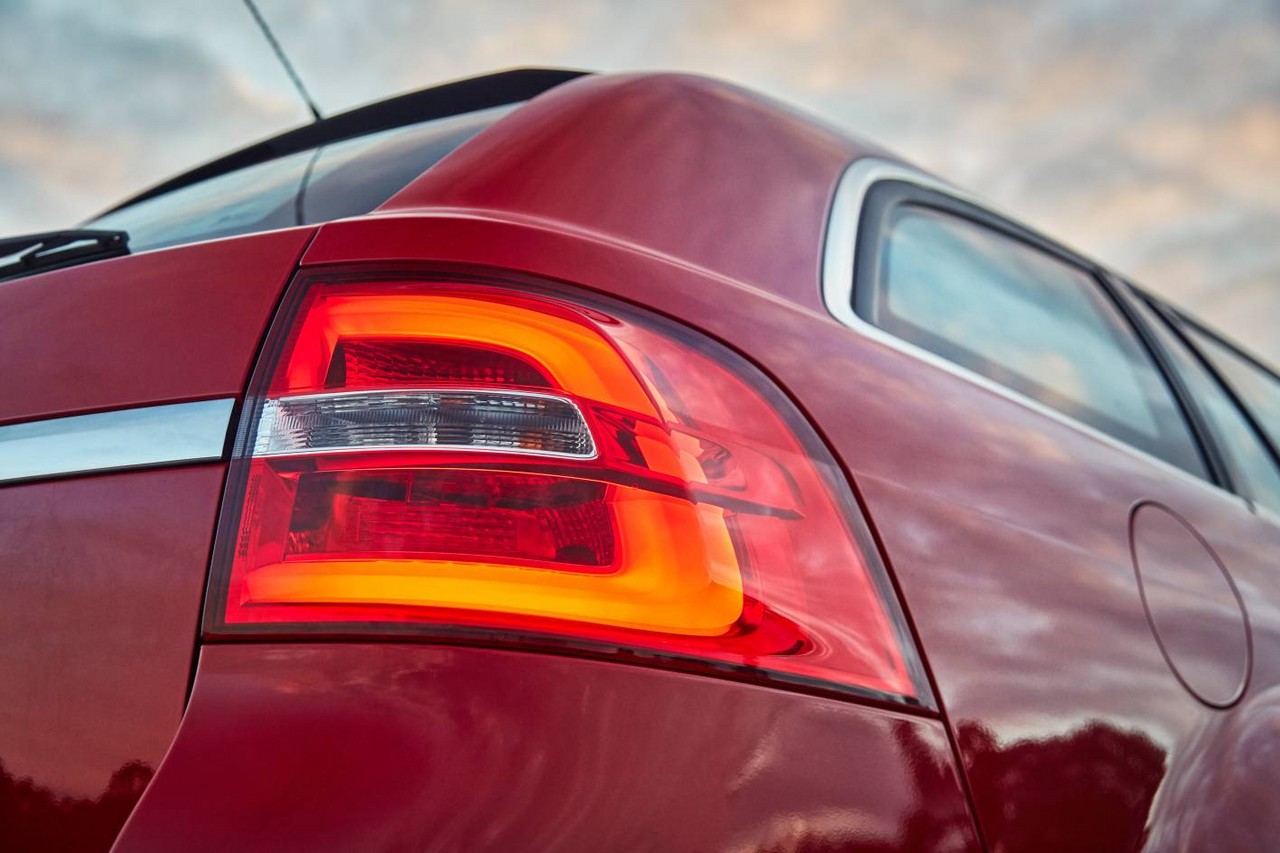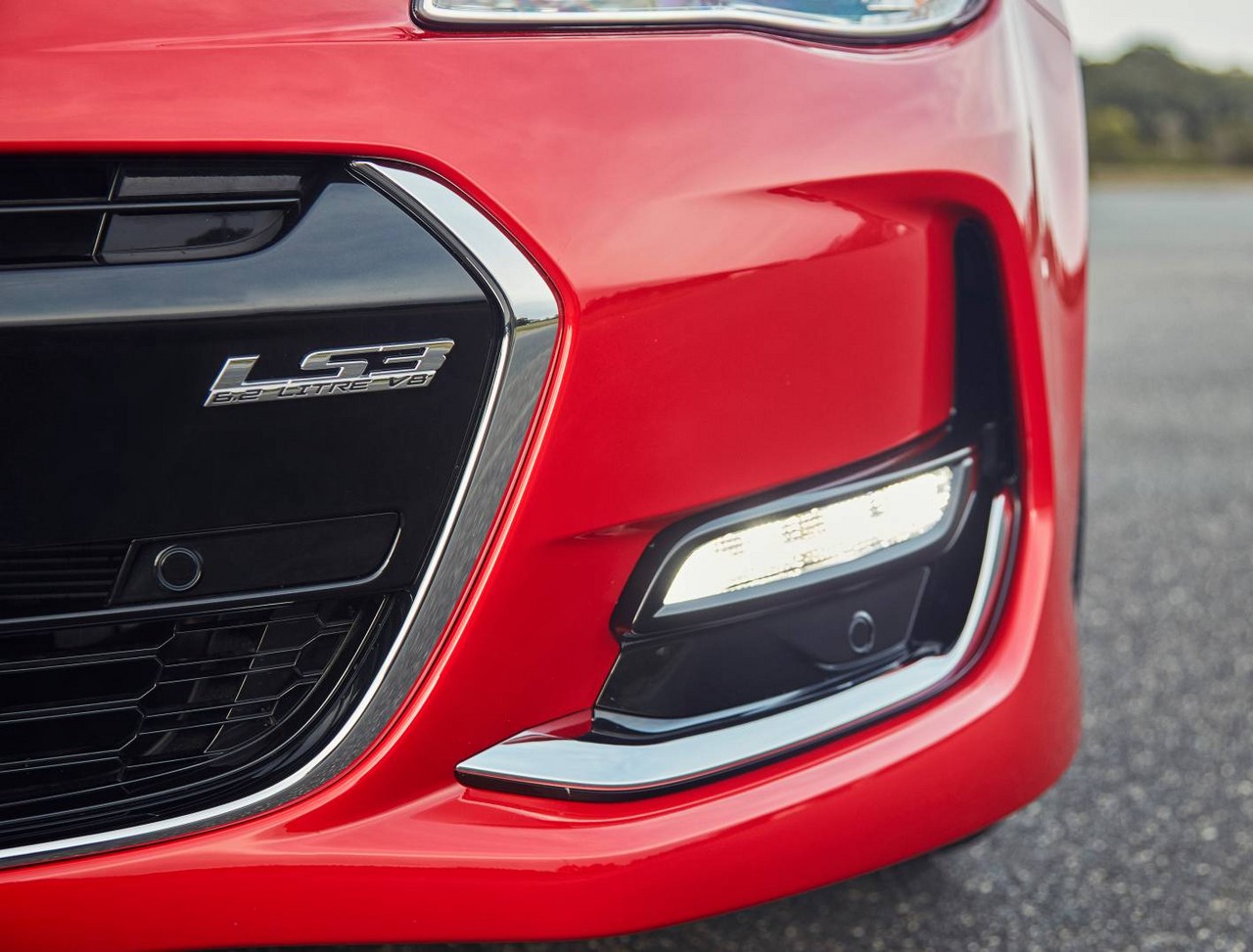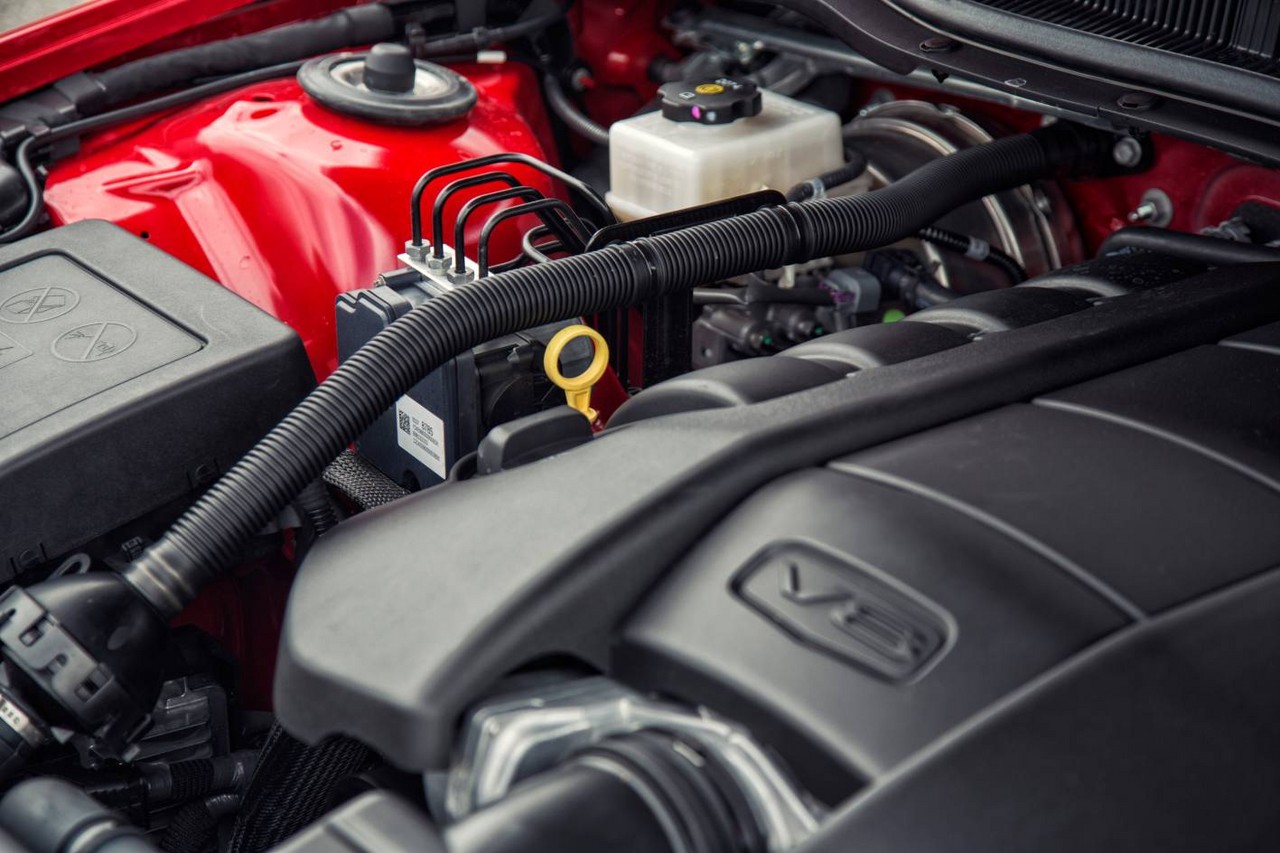
- Impressive ride/handling balance
- Powerful 6.0-litre L77 V8 and, for VF.II Sportwagon, 6.2-litre LS3 V8 engines
- Accurate steering
- Spacious and comfortable interior
- Quiet, well-insulated cabin
- Thick A-pillars impair forward visibility
- Interior plastics scratch easily
- Despite VF mass reductions, heavy body hurts fuel economy
- Carbon deposits on intake valves of direct injection V6 engines
Review: Holden VF.I Sportwagon (2013-15)
Overview
Released in May 2013, the Holden VF Series I (VF.I) Sportwagon was a large, rear-wheel drive wagon; the VF Commodore sedan has been reviewed separately. Manufactured in Elizabeth, South Australia, the VF Sportwagon was available with 3.0- and 3.6-litre V6 petrol engines, 3.6-litre V6 LPG engines and 6.0-litre V8 petrol engines. As per the table below, the VF Sportwagon range consisted of Evoke, SV6, SS, SS V and SS V Redline variants.
Engines: SIDI V6, LPG V6 and L77 V8
Of the engines,
- For the Sportwagon Evoke, the 3.0-litre LFW V6 petrol engine had all-aluminium construction, a forged steel crankshaft, forged powdered metal connecting rods, twin knock control sensors, double overhead camshafts (DOHC), direct fuel injection (Holden’s Spark Ignition Direct Injection or SIDI), four valves per cylinder, continuously variable intake and exhaust camshaft phasing, electronic throttle control and a compression ratio of 11.7:1. For the VF range, a single pipe exhaust was used rather than the VE’s twin pipe system;
- The 3.6-litre LWR dedicated LPG engine differed in that it had multi-point vapour injection, hardened valves and valve seats, a redesigned cylinder head and manifold, specially-developed injectors, a unique fuel rail, new pistons with pentroof-style domes and a compression ratio of 12.2:1;
- For the Sportwagon SV6, the 3.6-litre LFX V6 petrol engine differed from the 3.0-litre LFW petrol engine in its capacity, lower compression ratio of 11.3:1 and twin pipe exhaust system; and,
- For the Sportwagon SS and SS V, the 6.0-litre L77 pushrod V8 engine had all-aluminium construction, flat-topped pistons, forged powered metal connecting rods, a billet steel camshaft, two valves per cylinder, external knock sensors and a compression ratio of 10.4:1.
While the 3.0-litre LFW V6 and 6.0-litre L77 V8 engines were initially flex-fuel capable (i.e. capable of running on E85 fuel which consisted of 85 per cent ethanol and 15 per cent petrol), this capability was discontinued in October 2014 as part of the ‘MY15’ update.
Transmissions
The V6 engines were available with six-speed 6L45 automatic transmissions, while the V8 engines were mated to six-speed 6L80 automatic transmissions.
| Engine | Trans. | Years | Peak power | Peak torque | |
|---|---|---|---|---|---|
| Evoke | 3.0-litre LFW petrol V6 SIDI | 6sp auto | 2013-15 | 185 kW at 6700 rpm | 290 Nm at 2600 rpm |
| 3.6-litre LWR LPG V6 | 6sp auto | 2013-15 | 180 kW at 6000 rpm | 320 Nm at 2000 rpm | |
| SV6 | 3.6-litre LFX petrol V6 | 6sp auto | 2013-15 | 210 kW at 6700 rpm | 350 Nm at 2800 rpm |
| 3.6-litre LWR LPG V6 | 6sp auto | 2013-14 | 180 kW at 6000 rpm | 320 Nm at 2000 rpm | |
| Calais, Calais V |
3.6-litre LFX petrol V6 SIDI | 6sp auto | 2013-15 | 210 kW at 6700 rpm | 350 Nm at 2800 rpm |
| Calais V V8, SS, SS V, SS V Redline |
6.0-litre L77 petrol V8 AFM | 6sp auto | 2013-15 | 260 kW at 5600 rpm | 517 Nm at 4400 rpm |
Development and dimensions
The VF Sportwagon was underpinned by the same Zeta architecture as the VE Sportwagon . For the VF Sportwagon, however, ultra-high strength Boron steel was used to reinforce the A-pillars and the header which joined them. Other changes included the use of aluminium for the bonnet, front steering knuckle and tension arms to conserve mass.
Compared to the VE Sportwagon , the VF Sportwagon was 25 mm longer (at 4919 mm), 1 mm narrower (1898 mm) and 2 mm lower (1474 mm), though wheelbase length (2915 mm) was unchanged; inside, cargo space was 895 litres with the rear seats in position and 2000 litres with the seats folded down.
Suspension
The VF Sportwagon had double-pivot MacPherson strut front suspension with dual lower links (with individual ball joints), a tension link, lateral link and a direct acting stabiliser bar. The rear suspension was a four-link independent system with coil-over shock absorbers, three lateral ball joints per side, three cross ball joints and a decoupled stabiliser bar.
Electric power steering
Like the VF Commodore , the VF Sportwagon introduced electric power steering (EPS) which reduced fuel consumption and offered different settings for variants within the range. As such, the Evoke had lighter ‘Touring’ steering settings, while the SV6, SS, SS V and SS V Redline had ‘Sports’ settings which provided more feedback and feel; ‘Competition’ settings were available as an option for the SS V Redline.
In October 2014 (‘MY15’), the EPS settings were recalibrated to enhance on-centre steering feel and precision. As standard, the SS V Redline was fitted with the ‘Sport and Competitive’ calibration.
Safety equipment
Standard safety equipment for the Holden VF Sportwagon included dual front airbags, front side airbags, full-length curtain airbags, ABS, electronic brake force distribution, brake assist, electronic stability control, traction control and front seatbelts with pretensioners and load limiters. Hill Hold Control and Hill Start Assist functions were also fitted as standard.
The Sportwagon SV6, SS and Calais were further equipped with Blind Spot Alert and Reverse Traffic Alert systems, while the SS-V Redline and Calais V will add Forward Collision Alert and Lane Departure Warning systems.
Brakes
The VF Sportwagon was available with three braking packages –
- For models with V6 engines: 298 mm by 30 mm vented front brake discs with two-piston aluminium calipers and 302 mm vented rear discs with single-piston aluminium calipers;
- For the SS and SS V: 321 mm by 30 mm vented front brake discs with two-piston aluminium calipers and 324 mm by 22 mm vented rear discs with single-piston aluminium calipers; and,
- For the SS V Redline: 355 mm by 32 mm vented front brake discs with four-piston, two-piece Brembo aluminium calipers and 324 mm by 22 mm vented rear discs with single-piston aluminium calipers.
ANCAP crash testing
In ANCAP crash testing , the VF Sportwagon received a five star adult occupant protection rating with a score of 35.06 out of 37. In the offset crash test, occupant protection was generally rated as good, though chest and lower leg protection for the driver were acceptable. In the side impact and pole tests, however, maximum points were awarded.
Features: Sportwagon Evoke
Standard features for the Sportwagon Evoke includedd 16-inch alloy wheels with 225/60 R16 tyres, a six speaker sound system with a CD player, MP3-compatibility and auxiliary inputs, an eight-inch touchscreen with Holden’s MyLink, enhanced voice recognition and Siri Eyes Free integration, dual-zone climate control air conditioning, a four-way power adjustable driver’s seat, cruise control, automatic headlights, a rear view camera, front and rear parking sensors, 60/40 split and flat folding rear seats, remote central locking, remote vehicle start (for models with automatic transmissions), power windows and mirrors, tilt and telescopic steering wheel adjustment, an electric park brake, a 12 volt power outlet, trip computer and an immobiliser.
Standard features also included an ‘Auto Park Assist’ function which enables the vehicle to steer into parallel and 90-degree angle parks while the driver operates the accelerator and brake pedals. From October 2014, ISOFIX anchorage points were fitted across all three rear seats.
Features: Sportwagon SV6, SS, SS V and SS V Redline
Compared to the Evoke, the Sportwagon SV6 and SS were further equipped with 18-inch alloy wheels with 245/45 R18 tyres, FE2 sports suspension, suede/Sportec cloth sports seats, daytime LED running lights and a leather-wrapped steering wheel; from October 2014, the SV6 was also fitted with a full-sized alloy spare wheel as standard (replacing the tyre sealant and air compressor kit. Visually, the SV6 and SS variants could be identified by their front and rear sports fascias, side skirts, and chrome exhaust tips.
Beyond this, the Sportwagon SS V added 19-inch alloy wheels with 245/40 R19 tyres, an eight speaker sound system with a CD/DVD player, leather seats, satellite navigation (with full colour maps, live traffic updates and traffic management control), front fog lights, digital instrument display, a proximity key and push-button start.
The Sportwagon SS V Redline was distinguished by its 19-inch forged alloy wheels with 245/40 R19 front and 275/35 R19 rear tyres, FE3 ultra sport suspension, a colour head-up display and rain-sensing wipers. For the SS-V Redline, the driver could also engage a ‘competition mode’ with launch control and track settings.
From October 2014 (‘MY15), the SS V Redline was fitted with split-rim 19-inch black alloy wheels, a ‘Jet Black’ interior scheme was made standard (available with optional titanium highlights) and steering wheel gearshift paddles were introduced for the automatic transmission. Steering wheel gearshift paddles were also introduced as an extra-cost option for the SV, SS and SS V.
Features: Sportwagon Calais and Calais V
Compared to the Evoke, the Calais was further equipped with 18-inch alloy wheels with 235/50 R18 tyres, leather seats, a digital instrument display, daytime LED running lights, a proximity key with push-button start and cargo nets. Visually, the Calais variants could be identified by their exterior chrome highlights.
The Calais V was distinguished by its 19-inch alloy wheels with 245/40 R19 tyres, satellite navigation (with full colour mapping, live traffic updated and traffic management control), premium leather seats, an eight-way power adjustable driver’s seat, heated front seats, a colour head-up display, rain-sensing wipers and heated door mirrors with automatic dipping on reverse.
2013 VF Sportwagon International
In October 2013, a limited-run International variant was released to commemorate the 35th anniversary of the Sportwagon. Compared to the Evoke, the International was further equipped with 18-inch alloy wheels, leather seat trim, daytime LED running lights, a leather-wrapped steering wheel and gearshift lever, Blind Spot Alert and Reverse Traffic Alert. In addition to its alloy wheels, the International could be identified by its dark bezel headlights and ‘International’ badge.
2014 Sportwagon SV6 Storm and SS Storm
In April 2014, the Sportwagon SV6 and SS variants were released in limited-run Storm editions. Compared to their standard counterparts, the SV6 Storm and SS Storm were further equipped with unique 18-inch alloy wheels with darkened ports, satellite navigation, ‘Storm’ dashboard embroidery, red contrast stitching for the dashboard and seats, front fog lights, chrome highlights and ‘Storm’ badges.
2015 Sportwagon Sandman
Available from July 2015, the Sportwagon Sandman consisted of an optional, $2950 package that was available for SV6 and SS V variants and consisted of:
- 20-inch gloss black wheels;
- Black fender vents;
- Black grille package;
- Black roof racks;
- Sandman decals;
- Sandman dashboard stitching;
- Sandman sunshades;
- Sandman floor mats; and,
- A unique Sandman build plate.
As an extra-cost option, the Sportwagon Sandman was available with orange sheep skin seat inserts and an orange shag pile cargo rug. The Sportwagon Sandman was available in Heron White, Nitrate Silver and Phantom Black paint finishes.
2015 Sportwagon SV6 Storm and SS Storm
In May 2015, the Storm Editions of the Sportwagon SV6 and SS were released. Compared to the standard SV6 and SS variants, the Storm Editions added 18-inch dark finish alloy wheels, satellite navigation, red contrast seat stitching, front fog lights, ‘Storm’ dashboard embroidery and ‘Storm’ exterior badges.
Brochure
- Brochure: Holden VF Commodore, Calais and Sportwagon (March 2014)
- Brochure: Holden VF Commodore, Sportwagon and Calais (October 2014)
Related links
- Holden Media: New Holden VF Commodore Range – Looks to Turn Heads, Prices That Change Minds (July 2013)
- Holden Media: VF Commodore – Stronger, Safer, Smarter (May 2013)
- Holden Media: Precision, Refinement and Economy: Chassis Evolution Drives Best Ever Commodore (May 2013)
- Holden Media: New Technologies and Sleek Design Make Commodore the Most Economical Yet (May 2013)
- Holden Media: MyLink tunes VF Commodore to Driver Demands (May 2013)
- Holden Media: VF SS V Redline Sets new Standard for Holden Performance (July 2013)
- Features: Holden VF Commodore, Calais and Sportwagon (May 2013)
- Technical Specifications: Holden VF Commodore, Calais and Sportwagon (May 2013)
- Product Information: Holden VF Range (May 2013)
- Holden Media: Storm Hits Australia as Holden Introduces New VF Commodore Special Edition (April 2014)
Review: Holden VF.II Sportwagon (2015-17)
Overview
Produced from September 2015, the Holden VF Series II (VF.II) Sportwagon introduced GM’s 6.2-litre LS3 V8 engine (detailed below). Where fitted, the V8 engine was accompanied by a bi-modal exhaust with a Holden-designed ‘Baillie Tip’ and mechanical sound enhancer.
Visually, the VF.II Sportwagon could be identified by its new LED tail-lights. The Sportwagon SV6, SS and SS V could be identified by their new front fascias with ducts at the outer edges and alloy wheel designs, while bonnet vents were also introduced for the SS and SS V variants. Both the fascia ducts and bonnet vents were aerodynamically tested at the Monash University wind tunnel.
As part of the VF.II update, the rear suspension for the FE3 suspension tune was revised for greater ride comfort.
LS3 V8 engine
The all-aluminium, ‘Generation IV’ 6.2-litre LS3 pushrod V8 engine had a 103.25 mm bore and 92.0 mm stroke, flat-topped pistons, cast-steel roller rocker arms, roller cam followers, coil pack ignition, two valves per cylinder, hollow-stem intake valves, twin knock control sensors, distributorless ignition and a compression ratio of 10.7:1.
Compared to the L76 and L98 engines, the 6.2-litre LS3 V8 engine had longer bores (103.25 mm compared to 101.6 mm), a stronger block, higher-flow cylinder heads and injectors, hollow-stem intake valves, unique pistons, a more aggressive camshaft with 14.0 mm lift and a revised manifold.
| Engine | Trans. | Peak power | Peak torque | |
|---|---|---|---|---|
| Evoke | 3.0-litre LFW petrol V6 SIDI | 6sp auto | 185 kW at 6700 rpm | 290 Nm at 2600 rpm |
| 3.6-litre LWR LPG V6 | 6sp auto | 180 kW at 6000 rpm | 320 Nm at 2000 rpm | |
| SV6 | 3.6-litre LFX petrol V6 | 6sp auto | 210 kW at 6700 rpm | 350 Nm at 2800 rpm |
| Calais, Calais V |
3.6-litre LFX petrol V6 SIDI | 6sp auto | 210 kW at 6700 rpm | 350 Nm at 2800 rpm |
| Calais V V8, SS, SS V, SS V Redline |
6.2-litre LS3 petrol V8 | 6sp auto | 304 kW at 6000 rpm | 570 Nm at 4400 rpm |
Features: VF.II Sportwagon
Compared to their VF.I predecessors, standard features for the VF.II Sportwagon SV6 and SS were extended to include a proximity key for keyless entry and push button start (Holden’s Passive Entry/Passive Start). Furthermore, the VF.II Sportwagon SS V was fitted with a head-up colour display as standard.
The Sportwagon SS V Redline was fitted with rear Brembo brakes as standard (previously front only), while 20-inch forged wheels were available as an extra-cost option.
2016 Holden VF.II Sportwagon Black
Released in April 2016, the Holden VF.II Sportwagon Black was based on the Sportwagon SV6 or SS. The Sportwagon Black could be identified by its unique 18-inch alloy wheels with black finish on the wheel ports, black grille and ‘Black Edition’ badging. Inside, standard features extended to include satellite navigation, a colour head-up display, red seat stitching and ‘Black Edition’ front floor mats.
Holden VF.II Sportwagon: February 2017 changes
In February 2017, the Holden VF.II Sportwagon range was revised as the Sportwagon Calais and Sportwagon SS-V were discontinued. As part of the update, standard features for the Sportwagon SV6, Sportwagon Calais and Sportwagon SS were extended to include satellite navigation, while the Sportwagon SV6 and Sportwagon SS were also fitted with a head-up display.
Cosmetic changes for the 2017 Holden VF.II Sportwagon range included:
- For the Sportwagon SV6, black finish 18-inch alloy wheels;
- For the Sportwagon SS, 19-inch alloy wheels (previously 18-inch);
- For the Sportwagon Calais V, 19-inch alloy wheels with a new finish; and,
- For the Sportwagon SS-V Redline, a black grille, fender vents, door mirror scalps and daytime running light surrounds. Inside, the Sportwagon SS-V Redline featured a ‘jade black’ applique on the instrument panel and steering wheel, and new ‘V’ sill plates.
Brochure
Related links
- Holden Media: Holden Commodore VFII: The Quickest, Most Powerful, Most Advanced Commodore Ever (September 2015)
- Wikipedia.org: Holden VF Commodore
